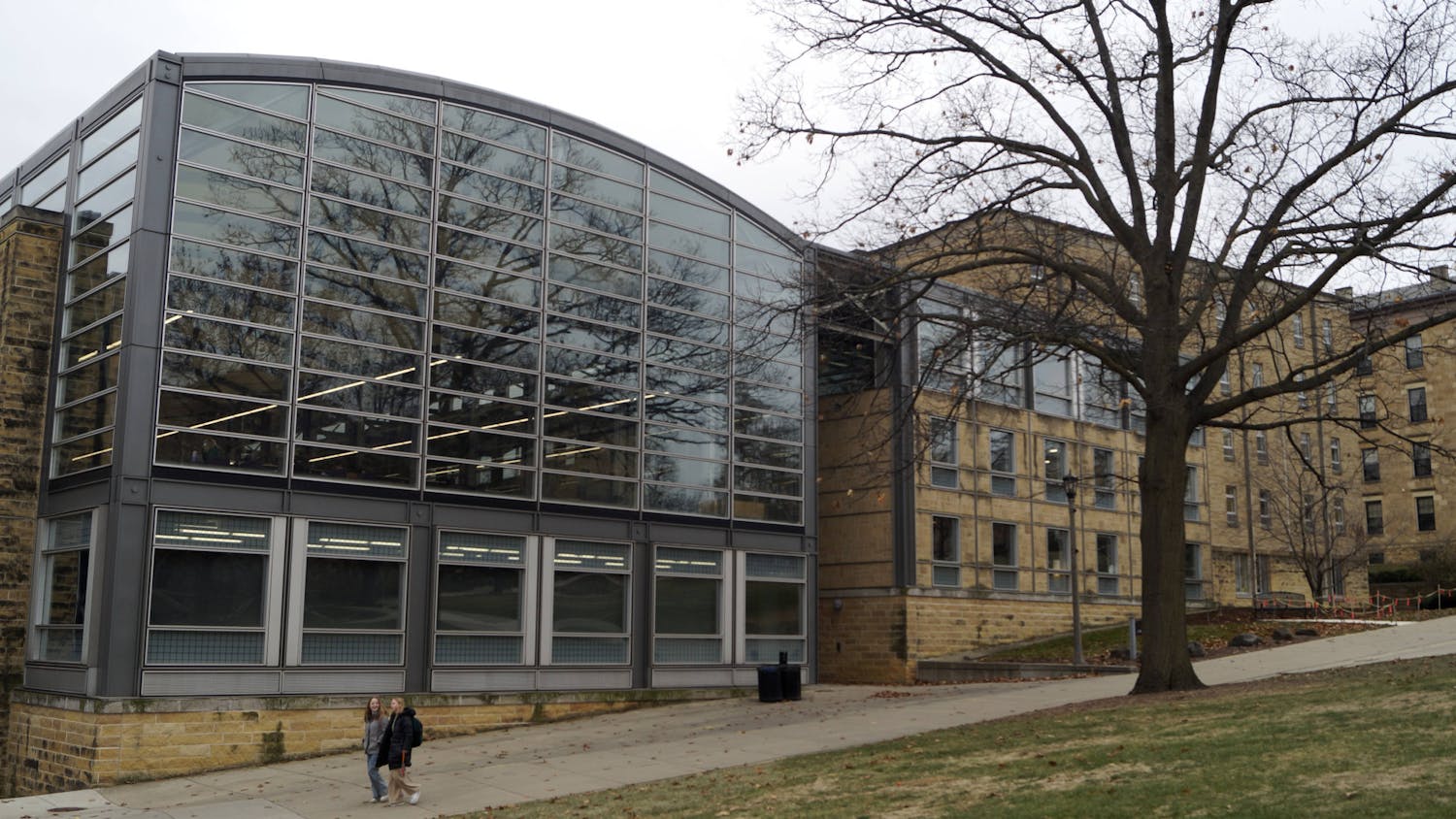Nonprofit organization 5 Lakes Institute announced a regional fusion energy alliance at the Great Lakes Fusion Energy Summit at the University of Wisconsin-Madison Tuesday. The alliance focused on “connecting the dots” between stakeholders, John Myer, 5 Lakes Institute fellow, said in a press release.
The organizing members of the Great Lakes Fusion Energy Alliance are nuclear engineering companies Realta Fusion, SHINE Technologies, Tokamak Energy and Fusion Fuel Cycles and manufacturing companies Strohwig Industries and Paragon D&E. The alliance hopes to expand to include “research institutions, manufacturers, technology developers, policymakers and community leaders,” according to the press release.
Nuclear fusion, the reaction that powers the sun, occurs when two small atomic nuclei are pushed together in highly-pressurized conditions, joining them together and creating a massive energy output in the process. Fusion has the potential to release four times more energy per kilogram of fuel than nuclear fission and nearly four million times more energy per kilogram than burning oil or coal, according to the International Atomic Energy Agency.
The event featured speakers from several nuclear fusion companies, including three UW-Madison startups: Realta Fusion, Type One Energy and SHINE Technologies.
Oliver Schmitz, nuclear engineering and engineering physics professor and Associate Dean for Research Innovation in the College of Engineering, co-founded Realta Fusion. He told The Daily Cardinal the conference was useful for the future of nuclear fusion research at UW-Madison and its development in the Midwest.
“This summit is so important for us because we are, since four or five decades, a second to none entity on the world market in terms of basic research to create fusion systems,” Schmitz said. “Bringing this from the lab to society to application is where we need economic development partners, policy partners, and friends… the public needs to buy in and like the technology we are developing.”
Jean Paul Allain, head of Fusion Energy Sciences at the Department of Energy, joined virtually from Washington D.C. to support the alliance. China currently invests around $1.5 billion per year into fusion technologies, while the United States is the second-highest investor at around $790 million per year, according to Allain’s presentation at the event.
“We're by far the world leaders in advanced computing, high performance computing and multistep modeling, validated across our U.S. facilities in fusion,” Allain said. “Advanced computing is developing the models that are enabling us to think about what the future of fusion energy systems and machines are going to look like. That's where the private sector and the bridge to the public sector really lies.”
Why nuclear fusion?
Nuclear power takes significantly less space to produce the same amount of energy as solar or wind farms, and would provide an “always-on” source of steady energy, unlike variable-production solar and wind, Kieran Furlong, chief executive officer and co-founder of Realta Fusion, told the Cardinal in an interview.
“With data centers and ever-growing energy consumption, we don't have enough power in the energy density of some of the technologies that I grew up with,” Aaron Washington, a technical project manager at Tokamak Energy, said on a panel at the event. “Fusion is more efficient than all of them.”
Current economic analyses predict building nuclear fusion plants would be expensive, but nuclear fusion advocates say it is a worthwhile investment.
“It's a high capital expenditure upfront, but in terms of full power years and amount of power that comes out of a particular reactor, [fusion] is hard to compare to anything but fission, and you don't have the downsides of what fission offers,” Washington said.
Nuclear fusion requires different facilities than nuclear fission and does not directly produce fuel waste, though the components of the reactor used to create a fusion reaction become radioactive over time. And unlike fission reactors, fusion reactors have no potential for runaway reactions because they shut down if conditions are not maintained.
“If you have a process upset, the plasma instantly cools down and [the reaction] stops,” Furlong told the Cardinal.
Several companies at the conference predicted nuclear fusion plants would be serviceable by 2034 or 2035. Though the science of nuclear fusion has not progressed to a point where it can be reliably grid-connected and generated at a large scale, if it does, “it’s going to take the world like a tidal wave,” according to Emmanuel Guilhamon, Global Sustainability vice president at Rockwell Automation.
Guilhamon said nuclear fusion checks several important boxes as an energy source because it is abundant, sustainable, accessible, consistent and does not create large amounts of radioactive waste.
“When technology allows us to do fusion, there's going to be a mad rush to create fusion everywhere,” Guilhamon said.
A fusion future?
In nuclear fusion reactions, plasma, a state of matter similar to superheated and ionized gas, serves as the medium for the collision and fusion of the nuclei of small atomic particles, most commonly hydrogen-based particles like deuterium and tritium that produce helium as a byproduct.
Other than containment, Schmitz said one of the greatest challenges of large-scale nuclear fusion deployment is heating the plasma necessary for the fusion process — but on a small scale, anyone can make plasma in a microwave.
“You can take a potato, cut it in the middle, turn it around with the wet side up in your microwave, and fire it up,” Schmitz told the Cardinal. “If you do have sufficient power, you will see a little glow on top of the potato, which is a plasma.”
Though plasma is easy to create on a small scale, creating a plasma hot enough to fuse the type of fuel necessary for nuclear fusion power plants is a difficult task. Deuterium and tritium typically fuse together at around 10 kilo-electron volts of energy, or at a temperature of about one hundred million degrees Celsius, according to Schmitz.
“If you want to do this for fusion applications, you need to bump up the temperature to something that's hotter than the sun,” Schmitz told the Cardinal. “You do this in a large container, and if you want to heat it up to this temperature, you need a lot of power.”
Heating the plasma is one hurdle, and containing the heat energy is another. Achieving an “energy plus,” or more energy produced than energy consumed for fusion reactions in a reactor setting, is an active area of research. The difficulty in doing so is the reason fusion has not yet gone to market.
“We need to create a containment that confines [plasma] enough that we do not lose the energy and we do not lose the particles,” Schmitz said. “It's a mix of heating well and confining well enough that whatever we put in stays in long enough that it can create heat.”
Plasma is typically contained with one of two confinement methods, inertial or magnetic. Inertial confinement fires lasers at a fuel pellet to create a fusion reaction, while magnetic confinement induces a magnetic field around a plasma, which contains and stabilizes the plasma and combines small hydrogen-based particles together. When the particles combine, or fuse together, a helium nucleus and a neutron are formed. The mass of the products is smaller than that of the original reactants, correspondingly increasing the energy of the products, which is then absorbed as heat by the containment vessel.
Two main types of magnetic confinement designs are utilized in the process of nuclear fusion, the stellarator and the tokamak. The tokamak, which takes the toroidal shape of a doughnut and creates a magnetic field by sending electric current through plasma, is the most-researched design, and has the best recorded results for containing plasma heat.
The stellarator is like a twisted version of the tokamak, and more complicated to build, but yields better results for plasma stability. Unlike the tokamak design, which requires intermittent downtime to reset the plasma current, the stellarator design does not send electric current through the plasma.
An active version of the stellarator runs at the Helically Symmetric Experiment (HSX) laboratory in UW-Madison’s Engineering Hall, and UW-Madison nuclear engineering professor Chris Hegna leads the stellarator design at nuclear fusion startup Type One Energy.
Realta Fusion, which collaborates with the Wisconsin HTS Axisymmetric Mirror (WHAM) facilities on campus, focuses on a third and rarer confinement design aiming to improve cost-effectiveness by using fewer magnets in development. All magnetic confinement designs use magnetic fields to contain hot plasma within the inner apparatus of the fusion device, preventing the plasma from touching reactor walls and transferring heat.
Rep. Supreme Moore Omokunde (D-Milwaukee), who attended the event, said his district is aiming to implement clean energy solutions and would be open to a conversation about nuclear energy.
There are currently several nuclear energy-related bills working their way through the Assembly and Senate, including a bill that would formally recognize the Legislature’s support for nuclear fusion and energy. Omokunde is the co-sponsor of a bill on clean energy, and said his bill aims to reduce carbon emissions by 52% by 2030.
Omokunde expressed his concern about nuclear waste if a fusion plant were to be built in Milwaukee. Though fusion does not produce the long-lasting nuclear waste that fission does, it still creates nuclear waste products because the neutrons escaping the fusion reaction slowly activate the containment materials over time. These radioactive products are not as long-lived as the products created from fission fuel, however.
“There are insurance companies that don't necessarily cover harm from nuclear waste,” Omokunde said. “And even if it's only a small amount, we're going to talk about thirty to sixty years of storage. And then what happens? Because I plan for us to be around here longer than that. Our future generations, what's going to happen to them?”
Several of the nuclear fusion companies were engaged in site selection for building future facilities, and during the chats spoke to manufacturing contractors about the feasibility and cost of using specific materials. With increased public and private support for nuclear fusion in recent years, Hegna said it is up to scientists and companies to follow through.
“We have to show that we're up to the task,” Hegna said. “If we're not up to the task, then we won't have fusion. Now we have milestones to meet. It's our job to meet them. And every time we meet a milestone, we get a little closer, and I think the skeptics go a little further away.”
Editor's Note: This article was edited at 2:50 pm on May 10 to clarify that kilo-electron volts measure energy, not temperature. The article was edited at 7:00 am on May 11 to include the alliance's name and clarify that the listed alliance members are organizing members.






